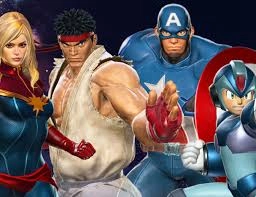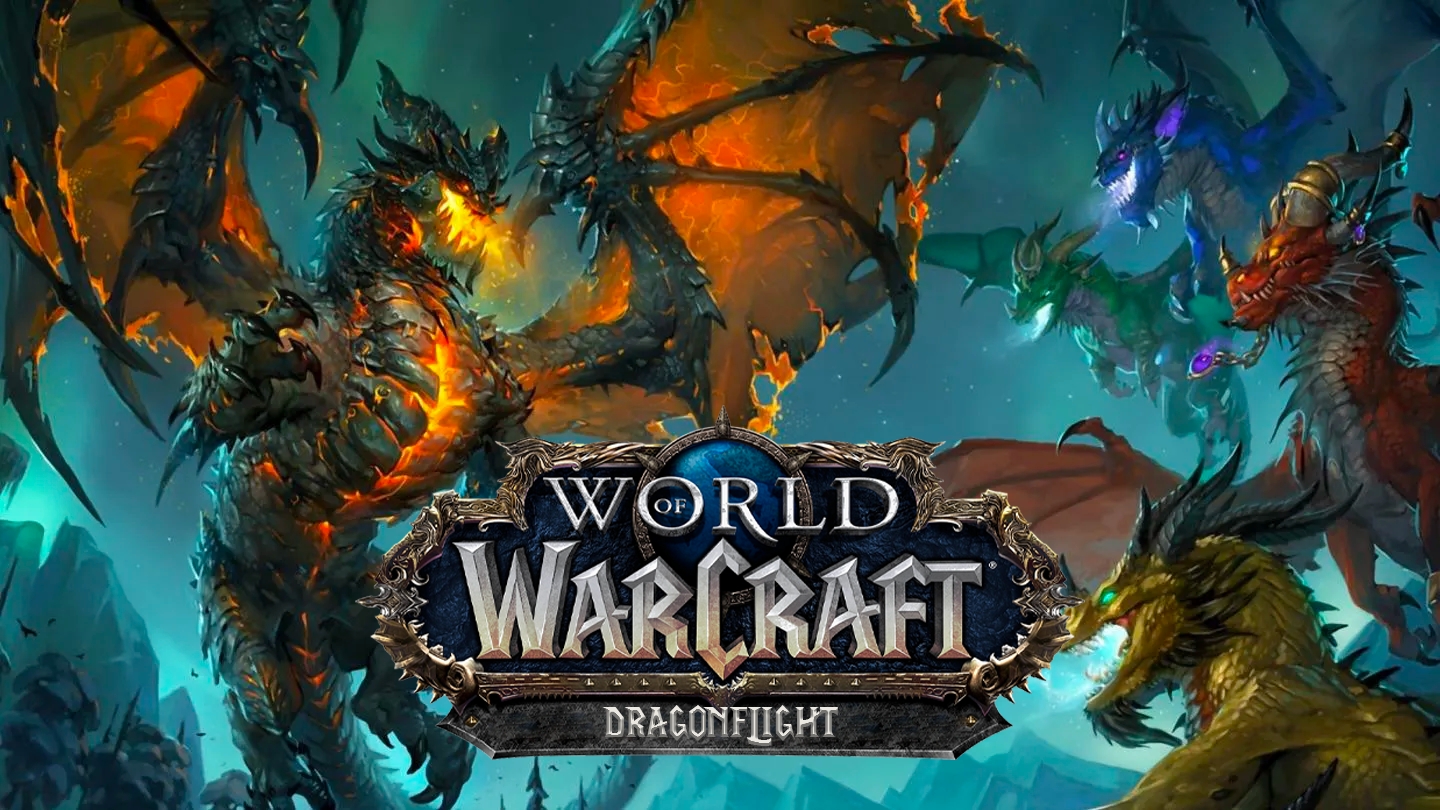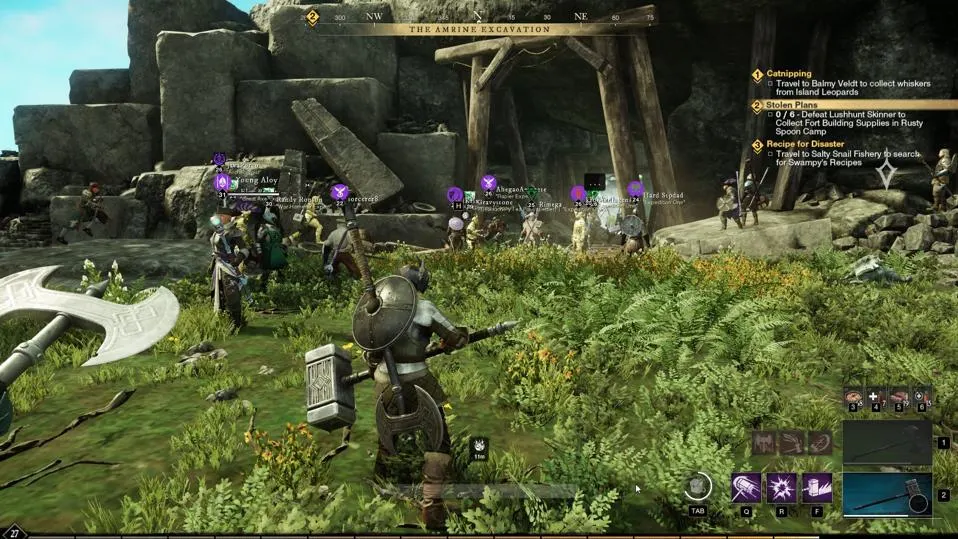Introduction
Marvel vs. Capcom: Infinite is the latest installment in the beloved crossover fighting game series, combining characters from Marvel Comics and Capcom’s vast video game universe. Released in 2017, this game brings together heroes, villains, and iconic characters in a 2v2 tag-team battle system that promises intense combat, strategic depth, and a blend of two universes that fans have cherished for decades.
Key Features of Marvel vs. Capcom: Infinite
Story Mode: A Cinematic Experience
One of the standout features of Marvel vs. Capcom: Infinite is its cinematic story mode. The game introduces a narrative where Ultron Sigma, a fusion of Marvel’s Ultron and Capcom’s Sigma, threatens the universe with a combined force of robotic and villainous powers. The heroes from both worlds must team up to stop this new threat, leading to an epic crossover that fans have long awaited.
2v2 Battle System: A Return to Simplicity
Marvel vs. Capcom: Infinite departs from the 3v3 battle system of its predecessor, Marvel vs. Capcom 3, and returns to a 2v2 format. This change streamlines the gameplay, making it more accessible to newcomers while maintaining the strategic depth that veterans of the series appreciate. The tag system allows players to swap characters mid-combo, leading to creative and devastating attacks.
Infinity Stones: A Game-Changing Mechanic
The introduction of the Infinity Stones adds a new layer of strategy to the game. Each stone grants unique abilities and a powerful Infinity Surge that can turn the tide of battle. The six stones—Power, Space, Time, Reality, Soul, and Mind—each offer different advantages, allowing players to customize their playstyle and counter their opponents.
Graphics and Art Style: A Mixed Reception
Character Design: A Blend of Old and New
The character designs in Marvel vs. Capcom: Infinite have been a point of contention among fans. While some characters have received updates that reflect their modern appearances in comics and games, others have been criticized for their visual style. The art direction leans towards a more realistic look, which contrasts with the vibrant and exaggerated designs of previous entries in the series.
Visuals: Bright and Dynamic
Despite the mixed reception of the character designs, the overall visual presentation of the game is bright and dynamic. The stages are filled with details that blend the Marvel and Capcom universes seamlessly, creating a visually engaging backdrop for the chaotic battles. The special effects during combat, especially when using Infinity Stones, are flashy and impressive, adding to the excitement of the game.
Gameplay Mechanics: Depth and Accessibility
Simplified Controls: Welcoming Newcomers
Marvel vs. Capcom: Infinite has simplified its control scheme compared to previous entries. The game introduces an auto-combo system that allows less experienced players to perform complex combos with ease. This feature makes the game more accessible to newcomers, without sacrificing the depth that hardcore fighting game fans seek.
Tag Mechanic: Strategic Depth
The tag mechanic in Marvel vs. Capcom: Infinite is one of its most significant gameplay features. Players can switch between their two characters at any time, even in the middle of combos. This mechanic opens up a world of possibilities for creating intricate and devastating combo strings. It also adds a layer of strategy, as players must decide when to tag in their partner to maximize damage or escape from dangerous situations.
Infinity Stones: Customizing Your Playstyle
The Infinity Stones are not just a gimmick; they fundamentally change how the game is played. Each stone offers a unique ability that can be activated at any time during a match, along with an Infinity Storm, which is a powerful, temporary buff. For example, the Time Stone allows for quick dashes and extended combos, while the Power Stone grants increased damage and knockback. This system allows players to tailor their strategy to their preferred playstyle or to counter their opponent’s tactics.
Character Roster: A Diverse Cast
Marvel Characters: Iconic Heroes and Villains
The Marvel side of the roster features a mix of classic characters and newer additions. Iconic heroes like Captain America, Iron Man, and Spider-Man return, alongside villains like Thanos and Dormammu. The inclusion of lesser-known characters like Gamora from the Guardians of the Galaxy adds variety and reflects Marvel’s expanding cinematic universe.
Capcom Characters: A Nostalgic Trip
Capcom’s roster brings back fan-favorites from various franchises. Characters like Ryu from Street Fighter, Mega Man X, and Dante from Devil May Cry are staples in the series, and their inclusion here will delight long-time fans. Newcomers like Monster Hunter also make their debut, adding fresh faces to the lineup.
Roster Size: A Point of Criticism
One of the criticisms of Marvel vs. Capcom: Infinite is the size of its roster. With 30 characters at launch (including DLC), the roster is smaller compared to previous entries in the series. Some fan-favorite characters, like the X-Men, are notably absent, which has led to disappointment among the fanbase. However, the characters that are included are well-balanced and offer a variety of playstyles.
Sound Design and Music: A Mixed Bag
Soundtrack: Hit or Miss
The soundtrack of Marvel vs. Capcom: Infinite is a mix of new compositions and remixes of classic themes. While some tracks, like the main menu theme, are memorable, others have been criticized for being generic and lacking the energy that defined the music of previous entries. The character themes are also less iconic, which is a letdown for fans who enjoyed the distinctive music in earlier games.
Voice Acting: A Strong Performance
The voice acting in Marvel vs. Capcom: Infinite is one of its strengths. The characters are brought to life by a talented cast of voice actors, many of whom reprise their roles from other media. The dialogue is delivered with enthusiasm, and the interactions between characters, especially in story mode, are entertaining and add personality to the game.
Online Multiplayer: Challenges and Competitiveness
Netcode: A Mixed Online Experience
The online experience in Marvel vs. Capcom: Infinite has been inconsistent. While the game uses rollback netcode, which is generally preferred in fighting games for its ability to reduce input lag, players have reported issues with connectivity and matchmaking. Lag can be a significant problem, especially in matches with players from different regions, leading to frustration in what should be a smooth and competitive experience.
Ranked Play: A Competitive Environment
For those looking to test their skills, Marvel vs. Capcom: Infinite offers ranked play, where players can compete to climb the leaderboards. The ranking system is well-implemented, providing a challenge for players of all skill levels. However, the smaller player base compared to other fighting games can lead to longer wait times for matches, especially at higher ranks.
Casual Play: Fun with Friends
In addition to ranked matches, Marvel vs. Capcom: Infinite offers casual play options, including lobbies where friends can gather for private matches. This mode is perfect for players who want to enjoy the game without the pressure of ranked play. The lobbies also allow for spectator mode, where players can watch their friends’ matches and learn from their strategies.
DLC and Post-Launch Support: Expanding the Experience
Character DLC: Mixed Reactions
Marvel vs. Capcom: Infinite has received several DLC characters since its launch, including popular characters like Venom and Black Panther. While these additions have been generally well-received, some fans feel that the DLC roster is too small and that certain characters should have been included in the base game. The cost of the DLC has also been a point of contention for some players.
Post-Launch Updates: Balancing and Bug Fixes
Capcom has provided post-launch support for Marvel vs. Capcom: Infinite in the form of balance patches and bug fixes. These updates have helped to address some of the issues that players encountered at launch, such as character balance and online stability. However, the frequency of updates has decreased over time, leading some players to feel that the game has been neglected in favor of other titles.
Reception and Criticism: A Divisive Entry
Critical Reception: Mixed Reviews
Marvel vs. Capcom: Infinite received mixed reviews from critics upon release. While the gameplay mechanics and depth were praised, the game’s visuals, roster size, and story mode were criticized. The departure from the 3v3 format and the absence of certain beloved characters were also points of contention. As a result, the game did not achieve the same level of acclaim as its predecessors.
Community Reaction: A Divided Fanbase
The fanbase of Marvel vs. Capcom: Infinite has been divided. Some players appreciate the changes made to the gameplay, particularly the introduction of the Infinity Stones and the return to 2v2 battles. Others, however, have been disappointed by the game’s roster, art style, and overall presentation. The game’s competitive scene, while still active, is smaller compared to other fighting games, reflecting the mixed reception from the community.
Sales Performance: A Disappointment
Marvel vs. Capcom: Infinite struggled to meet sales expectations. Despite the strong brand recognition of both Marvel and Capcom, the game failed to capture the attention of a broader audience. Contributing factors include the mixed critical reception, the lack of marketing compared to other high-profile titles, and the competition from other popular fighting games released around the same time.
Conclusion
Marvel vs. Capcom: Infinite is a game that takes bold steps in certain areas while stumbling in others. The gameplay mechanics, particularly the tag system and Infinity Stones, offer a fresh and engaging experience that both newcomers and veterans can enjoy. However, the game’s visual presentation, character
Frequently Asked Questions (FAQ)
Q1: What is Marvel vs. Capcom: Infinite?
A1: Marvel vs. Capcom: Infinite is a crossover fighting game featuring characters from Marvel Comics and Capcom’s video games. It focuses on 2v2 battles with a unique tag system and introduces the Infinity Stones as a gameplay mechanic.
Q2: How does the 2v2 battle system work?
A2: The 2v2 battle system allows players to select two characters and swap between them during combat. This system emphasizes strategic play and creative combo opportunities.
Q3: What are Infinity Stones, and how do they affect gameplay?
A3: Infinity Stones are powerful items that grant unique abilities and game-changing effects. Each stone provides a specific power and an “Infinity Surge” that can alter the course of a match.
Q4: How is the story mode in Marvel vs. Capcom: Infinite?
A4: The story mode features a cinematic narrative where heroes and villains from both universes team up to stop the threat of Ultron Sigma. It combines action-packed battles with cutscenes that advance the plot.
Q5: How many characters are in the game?
A5: Marvel vs. Capcom: Infinite launched with 30 characters, including DLC. The roster includes popular heroes and villains from both Marvel and Capcom, though some fan-favorites are missing.
Q6: Is the online multiplayer experience good?
A6: The online multiplayer experience is mixed. While it uses rollback netcode for reduced lag, some players experience connectivity issues, especially in matches across different regions.
Q7: Has the game received any DLC or updates?
A7: Yes, the game has received several DLC characters and post-launch updates that address balance and bug fixes. However, the frequency of updates has decreased over time.
Q8: Why did the game receive mixed reviews?
A8: The game received mixed reviews due to its visual style, smaller roster, and the absence of certain beloved characters. However, its gameplay mechanics were praised for their depth and accessibility.
Q9: Is Marvel vs. Capcom: Infinite worth playing?
A9: If you’re a fan of fighting games and enjoy crossover titles, Marvel vs. Capcom: Infinite offers a solid, albeit imperfect, experience with unique mechanics and fast-paced combat.
Q10: Where can I play Marvel vs. Capcom: Infinite?
A10: Marvel vs. Capcom: Infinite is available on PlayStation 4, Xbox One, and PC.



